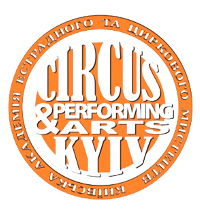Composition provisions on the theoretical researches of the Ukrainian Avant-garde artists: philosophical principles
Abstract
The article attempts a comparative analysis of the main theoretical propositions expressed by Ukrainian Avant-garde artists in their articles, manifestos, and treatises in connection with the prevailing philosophical concepts at that time, which formed the basis of the worldview of innovative artists. The fact that the theory of avant-garde art arose immediately with the appearance of creative experiments as a desire of the artists themselves to explain to the world and society the main ideas recorded in their art is of great interest for studying the philosophical-aesthetic and compositional-theoretical foundations of the artistic avant-garde of the first third of the 20th century as a complete artistic phenomenon. Even a short and rather superficial analysis shows that, despite all the stylistic diversity of the work of representatives of the Ukrainian Avant-garde, there are certain points of conflict of worldview concepts that found their expression in the theoretical work of innovative artists. An attempt to find these points of intersection, as well as to generalize and systematize them, is the task of our research.
Theoretical views are considered in connection with philosophical concepts that influenced the worldview of innovative artists. In particular, the influence of A. Bergson's philosophical concept of the intuitive, unconscious principle on both modernism as a whole and on the theoretical works of O. Arkhipenko and O. Bogomazov is considered. The categories of cosmic dynamism and the role of metaphysics in creativity are considered, as well as the three stages of perception of reality in creativity proposed by K. Fiedler – the method of imitation, the method of transformation and creation. A parallel is drawn with the classification proposed by K. Malevich, according to which art is divided into two stages – material and immaterial. The material is divided into the stage of natural phenomena and the stage of deformation of natural phenomena. While the immaterial or objectless stage is also divided into a pure form of revealing a picturesque worldview and a suprematic one, where a system of dynamic, static magnetic elements is already presented. The theoretical statements of such representatives of the Ukrainian avant-garde as Oleksandr Arkhipenko, Oleksandr Bogomazov, Mykhailo Boychuk, Kazimir Malevich are analyzed, as well as the theoretical views of Wassyl Kandinsky are presented.
References
2. Горбачов Д. «Він та я були українці» Малевич та Україна. Київ: Сім-студія, 2006. 456 с.
3. Павельчук І. Художні моделі абстрактного живопису в Україні. 1980-2000 (Епістемологія креації). Київ: Видавничий дім «Києво-Могилянська академія», 2013 с.
4. Прищенко С. Художньо-образна система рекламної графіки: монографія. Київ: НАКККіМ, 2018. 512 с.
5. Соколюк Л. Бойчук та його школа. Харків: Видавець Савчук О.О., 2014. 386 с.
6. Столярчук Н. Український авангард ХХ століття: навч. посіб. Луцьк: Вежа-Друк, 2015. 180 с.
7. Українські авангардисти як теоретики і публіцисти. Упорядн.: Д. Горбачов, О. Папета, С. Папета. Київ: Тріумф, 2005. 384 с.
8. Юр М. Абстрактний живопис України: світові тенденції та національні традиції. Сучасне мистецтво. 2009. Вип. 6. Сc. 243-248.
9. Kandinsky W. Über das Geistige in der Kunst Insbesondere in der Malerei mit Acht Tafeln und zehn Originalholzschnitten Dritte Auflage. München: R- Piper & Co., Verlag, 1912. 145 s.

 ISSN
ISSN  ISSN
ISSN 



